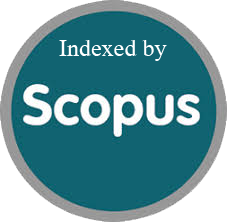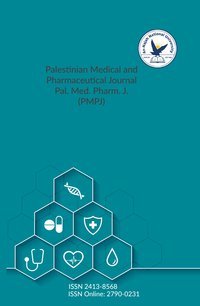New Non-Β-Lactam P-Dicarboxybenzene Derivatives: Insilco Design, Synthesis and Assessment of Their Antimicrobial Activities
Article info
2025-06-13
2025-07-19
2025-08-09
None - None
Keywords
- antimicrobial
- Docking
- Amide
- Hydrazides
- P-Dicarboxybenzene
- Terephthalic Acid
Abstract
: Infectious diseases were a leading cause of death worldwide, and antimicrobial resistance was consistently reported across the globe. Therefore, these challenges highlighted the need to explore new treatments with antimicrobial properties. This study focused on designing, synthesizing, and assessing the antimicrobial activity of new p-dicarboxybenzene (terephthalic acid) amide compounds. The new compounds were chosen based on docking study results and were synthesized by reacting freshly prepared acid chlorides with the prepared p-dicarboxybenzene hydrazide amines to produce the new amides. Their structures were confirmed using physical and spectral data. The antimicrobial activity was tested by measuring inhibition zones using the disk diffusion method. The results showed that all the synthesized compounds exhibited antimicrobial activity against the tested pathogenic microbes. The most powerful were T1, T3, and T4. T1 demonstrated inhibition zones of 28 mm, 26 mm, and 25 mm for Staphylococcus aureus, Streptococcus pneumoniae, and Escherichia coli, respectively, while T3 and T4 showed lower activity. These activities appeared to be weaker than those of standard antimicrobial agents. This indicated that the new amides were able to inhibit the penicillin-binding proteins in the microbial strains tested. Some findings were concluded concerning the structure-activity relationship of the synthesized compounds: the combination of nitro and halogen groups exhibited stronger antibacterial activity than either group used alone. Regarding antifungal activity, only T6 demonstrated a moderate effect (24 mm), which might have been due to the presence of ether or additional amide groups in those compounds. Overall, the synthesized compounds showed weak antimicrobial activity against all tested pathogenic microbes, implying that higher concentrations of these new amides were necessary to effectively inhibit PBPs in the microbial strains tested. The results also highlighted that combining nitro and halogen substituents produced stronger antibacterial effects than either group alone.
New Non-Β-Lactam P-Dicarboxybenzene Derivatives: Insilco Design, Synthesis and Assessment of Their Antimicrobial Activities
معلومات المقال
2025-06-13
2025-07-19
2025-08-09
None - None
الكلمات الإفتتاحية
- antimicrobial
- Docking
- Amide
- Hydrazides
- P-Dicarboxybenzene
- Terephthalic Acid
الملخص
: Infectious diseases were a leading cause of death worldwide, and antimicrobial resistance was consistently reported across the globe. Therefore, these challenges highlighted the need to explore new treatments with antimicrobial properties. This study focused on designing, synthesizing, and assessing the antimicrobial activity of new p-dicarboxybenzene (terephthalic acid) amide compounds. The new compounds were chosen based on docking study results and were synthesized by reacting freshly prepared acid chlorides with the prepared p-dicarboxybenzene hydrazide amines to produce the new amides. Their structures were confirmed using physical and spectral data. The antimicrobial activity was tested by measuring inhibition zones using the disk diffusion method. The results showed that all the synthesized compounds exhibited antimicrobial activity against the tested pathogenic microbes. The most powerful were T1, T3, and T4. T1 demonstrated inhibition zones of 28 mm, 26 mm, and 25 mm for Staphylococcus aureus, Streptococcus pneumoniae, and Escherichia coli, respectively, while T3 and T4 showed lower activity. These activities appeared to be weaker than those of standard antimicrobial agents. This indicated that the new amides were able to inhibit the penicillin-binding proteins in the microbial strains tested. Some findings were concluded concerning the structure-activity relationship of the synthesized compounds: the combination of nitro and halogen groups exhibited stronger antibacterial activity than either group used alone. Regarding antifungal activity, only T6 demonstrated a moderate effect (24 mm), which might have been due to the presence of ether or additional amide groups in those compounds. Overall, the synthesized compounds showed weak antimicrobial activity against all tested pathogenic microbes, implying that higher concentrations of these new amides were necessary to effectively inhibit PBPs in the microbial strains tested. The results also highlighted that combining nitro and halogen substituents produced stronger antibacterial effects than either group alone.
Since 2022
Cite Score (Scopus): 0.8
Time to First Decision: 3 Days
Submission to Acceptance: 45 Days
Acceptance to Publication: 64 Days
Acceptance Rate: 17%
Why should you
Publish With Us?
An-Najah National University
Nablus, Palestine
Nablus, Palestine
- P.O. Box
- 7, 707
- Fax
- (970)(9)2345982
- Tel.
- (970)(9)2345560
- (970)(9)2345113/5/6/7-Ext. 2628
- [email protected]
- EIC
- Prof. Waleed Sweileh
The Palestinian Medical and Pharmaceutical Journal (Pal. Med. Pharm. J.) © 2024 by An-Najah University, Nablus, Palestine is licensed under CC BY-NC 4.0
News and Views
